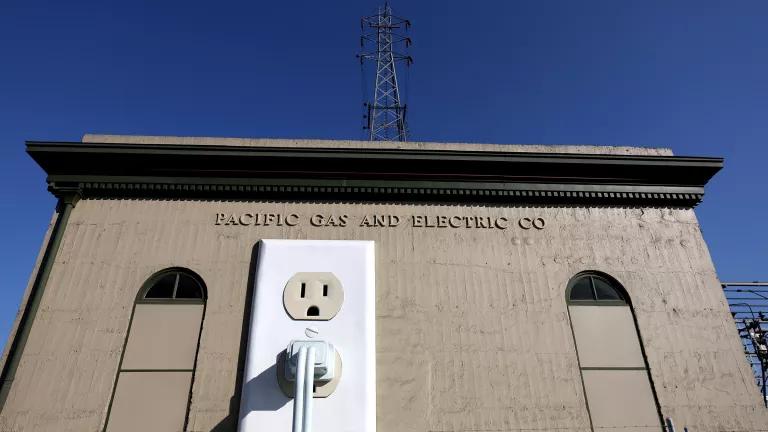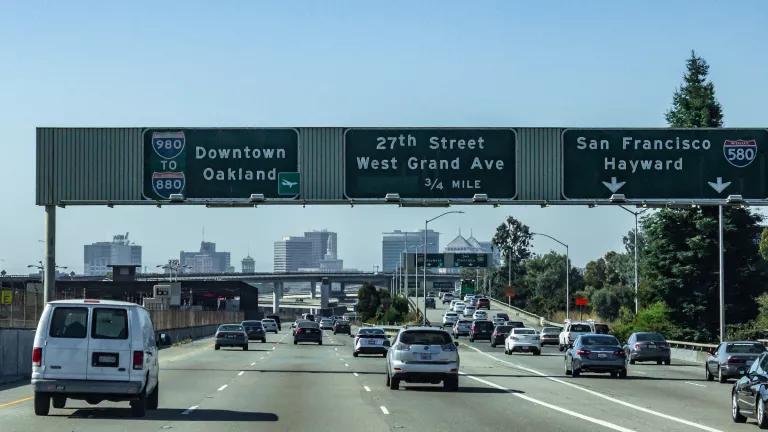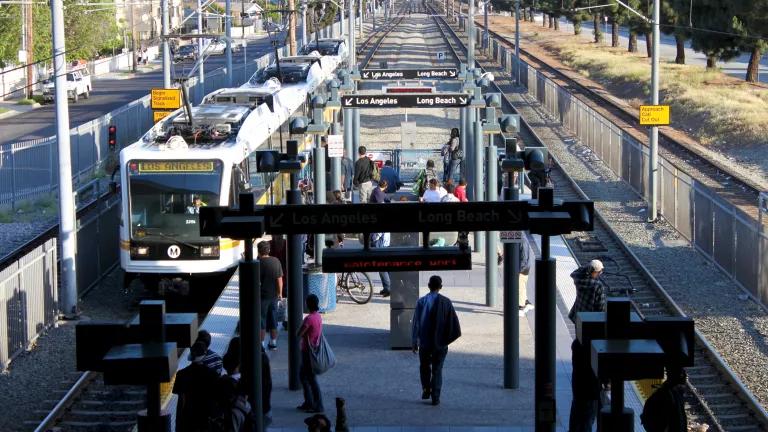PG&E’s Billing Software Delays Could Cost Californians Over $1 Billion
The CPUC must take decisive action to ensure fixes are made in a timely manner.

A PG&E electrical substation in Petaluma, California
Justin Sullivan/Getty Images
This blog was co-authored with Sylvie Ashford.
An efficient and up to date electric grid is foundational to meeting the state’s growing clean energy needs and decarbonizing California’s economy. But even the most modern grid can be undermined if the utility can’t communicate price signals to customers fairly and effectively. PG&E’s billing system is severely outdated and has repeatedly delayed efforts to update electricity pricing to reduce pollution and enhance equity. Billing customers is a basic function of a utility, this issue must be addressed urgently before it causes even more harm.
We estimate PG&E’s outdated billing system could cost low-income Californians up to $861 million in higher bills and an up to $283 million in environmental damages due to lower electric vehicle (EV) adoption because it denies access to fuel cost savings that motivate EV purchases. PG&E’s inaction could also irreparably slow California’s building decarbonization progress.
Fixing the system has not been a priority. This PG&E job posting indicates that PG&E may still be using a 60-year-old programming language—Cobol—to manage its billing systems. The California Public Utility Commission (CPUC) should issue fines based on the expected social cost of delay or require PG&E to outsource billing work to a third party.
Fair and accurate electricity prices are necessary for equitable decarbonization
As we’ve explained previously, rate reform is critical for equitable decarbonization. Cost-reflective rates encourage electricity use when cheap, pollution-free renewables are abundant and discourage electricity use when the power supply is constrained and dirty. If electricity is cheaper relative to gasoline and natural gas, Californians are more likely to purchase clean electric cars and appliances. And if we collect some of the shared costs of the grid through an income-graduated fixed charge or pay for them through the state budget, low-income Californians will realize millions in savings.
The CPUC is authorizing a design for these equitable, electrification-friendly rates. NRDC and TURN have a proposal that reduces all customers’ electricity per-kilowatt-hour rates by about 20% and provides the bottom third of earners with up to $350 in annual bill savings and minimal to no impact to middle-income earners. Southern California Edison and San Diego Gas & Electric plan to offer these rates by 2025. Pacific Gas & Electric (PG&E), however, claims it can’t do so until 2028 because of billing system limitations.
PG&E’s delay jeopardizes California’s climate goals and could cause billions in damages
If the CPUC adopts the NRDC/TURN proposal, then the delayed implementation that PG&E already forecasts would cost low-income customers between $632 and $861 million in lost savings. Further delays, which experience suggests are likely, will lead to even larger costs. In addition, these estimates are based on today’s electric rates. If rates escalate as fast as in recent years, lost savings will be far greater.
This delay can also cause customers to buy fewer EVs than state agencies forecast is necessary to meet California’s environmental goals because the delay denies consumers access to the fuel cost savings that motivate EV purchases. Fewer EVs mean more miles driven by polluting cars, with a societal cost of up to $283 Million. This cost includes the extra money PG&E customers will spend on gasoline, environmental damage from excess carbon emissions, and the health impacts of increased local pollution.
Our calculations, available here, apply a conservative cost of carbon, and don’t account for the longer-term ramifications of delayed EV adoption. If Californians considering a new EV buy a new polluting car instead, those cars will pollute for 15-20 more years on average. If customers aren’t buying EVs, the state may have to subsidize them further to achieve a carbon neutral economy by 2045.
Reducing the price of electricity is also critical for building electrification; the electric heat pump market is fairly nascent, and bill savings are a high priority for customers.
The damage done by PG&E’s obsolete billing system doesn’t end there. The federal government’s Solar for All grant sets aside $7 billion for solar and storage projects and the CPUC is developing a special tariff for community solar and storage customers. Together, these tools should spur the growth of clean community resources. But PG&E claims it can’t offer such a tariff until 2029 because of their billing system. This may mean foregoing federal incentives in PG&E territory, potentially leaving federal money on the table and collecting more from California ratepayers down the road.
PG&E has also yet to fully implement the Net Billing Tariff for rooftop solar and storage instituted in November 2022. Last month, they asked for another 8.5 month implementation extension from December 2023 to August 2024 to, as PG&E themselves noted, update their “outdated, inflexible” 30+ year old billing system. This tariff encourages energy storage adoption along with solar, which is important to keep California’s grid stable, reduce pollution from power plants after sundown, and correct unintended rate impacts of California’s past net metering policy. Timely implementation is essential to achieve these goals, as well as to create market certainty for solar and storage vendors and prospective customers.
PG&E’s delays are unjustified
In 2020, PG&E launched a six-year Billing System Modernization project to overhaul their system for the first time since 2001. They say they spent $19.1 million on the update alone in 2020 (see page 10-09 here), and recently requested $174 million to continue the project over the 2021-2024 period (see pages 546-549 here). This most recent request wasn't approved by the CPUC and was deferred to a future application. Given this ongoing funding in the millions, and that SDG&E and SCE have been able to keep their billing systems relatively responsive to billing changes that are needed, these delays are unacceptable and must be addressed immediately.

PG&E may still be dependent on 60+ year old code.
The Commission must take action now
PG&E’s obsolete data systems could cost at least $1 billion in social and environmental damage over four years. The CPUC must act. For one, the CPUC could issue PG&E annual fines after the other IOUs implement the equitable, electrification-friendly rates and until PG&E follows suit. This revenue could be distributed to lower income customers to make up for lost bill savings from PG&E’s tardiness.
The CPUC could also require PG&E to outsource its billing services. PG&E’s Home Energy Reports and Home Energy Audits programs are examples of how third-party vendors can develop solutions quickly with the necessary data. Through this program, vendors use smart meter data to tell customers how much money they can save from changing energy behaviors.
Smarter rate design can encourage electrification, which is necessary to decarbonize California’s economy. But to implement rates, we need adaptable and modern utility systems. Software updates should not delay our clean energy transition. The CPUC must hold PG&E accountable to improve its billing system and reform rates in a timely manner.
** Author's note: This blog was updated on 1/21/2024 to reflect the fact that the sum of lost low income savings and environmental costs of delayed transportation electrification are over $1 billion; the previous blog had erroneously stated that the environmental costs of delayed environmental electrification are greater than $1 billion itself.




